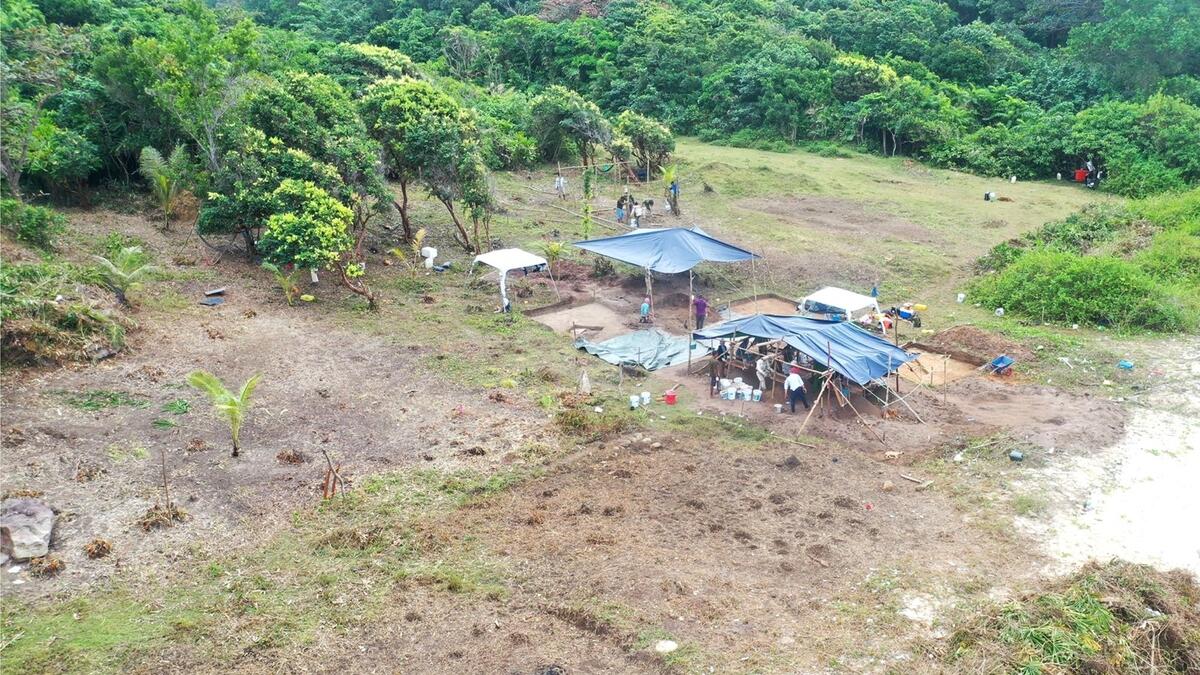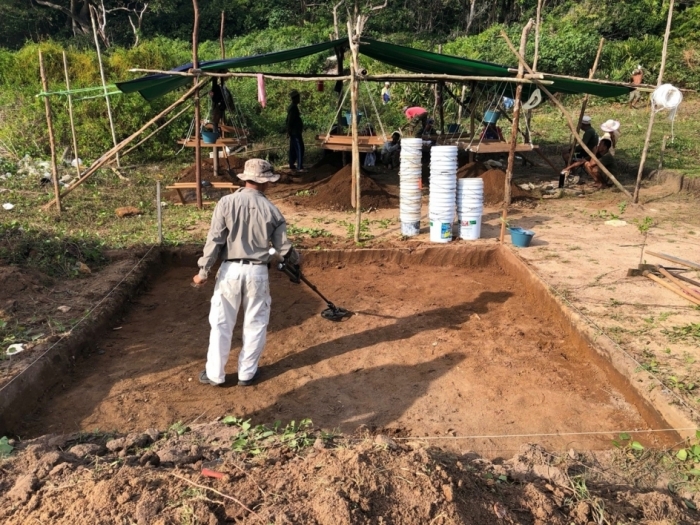ASU, US government partner to find missing service personnel

Aerial view of an excavation site after the brush has been cleared in Cambodia, 2022. Excavation conducted by Ohio Valley Archaeology Inc in partnership with the Defense POW/MIA Accounting Agency.
Over 1,500 Americans are still unaccounted for from the Vietnam War; 48 of those Americans are in Cambodia, according to the Defense POW/MIA Accounting Agency, or DPAA.
The DPAA is working with archaeologists at Arizona State University on a pilot project that uses an archaeological data repository, artificial intelligence and geographic information systems to conduct comparative analyses of where missing war personnel may be located in Cambodia.
“The project, ‘Comparative Digital Archaeological Project,’ leverages existing data from missing personnel cases across Cambodia, conducted over decades, as a pilot effort,” said Jesse Stephen, deputy director of the partnerships and innovation directorate at DPAA.
“The goal of the study is to improve DPAA's ability to interrogate and understand how temporal, spatial and environmental factors influence the potential recovery of archaeological materials, and ensure that every case is comprehensively understood as potential avenues towards recovery and identification are considered now and in the future,” Stephen said.
The government is working with the Digital Archaeology Record, or tDAR, a digital repository housed within the School of Human Evolution and Social Change at ASU. An important part of this project is collecting and organizing hard-copy DPAA documents and creating new datasets, explained Christopher Nicholson, associate research professor and director of the Center for Digital Antiquity where tDAR is housed.
Another part of the project was getting geographic information systems data of site locations of past DPAA recovery activities in Cambodia to serve as a case study for developing a probability model, he said. Anthropological archaeologist Brian McCray joined the ASU team as a postdoctoral scholar to help.
Heang Sambo of Golden West Humanitarian Foundation uses a metal detector to scan an excavation unit for unexploded ordinance while the screening crew behind him sifts for battle-related artifacts in Cambodia in 2022. Excavation conducted by Ohio Valley Archaeology Inc in partnership with the Defense POW/MIA Accounting Agency.
“Brian used these site locations to build a probability model that maps where in Cambodia there is a low, medium or high likelihood of having a successful recovery mission,” Nicholson said.
“Brian’s model is different from traditional archaeological predictive models, as these usually focus on a discrete human behavior that can be statistically modeled. In this case, aircraft crash locations are random, and the odds or chance of a successful recovery mission are co-dependent on environmental variables — soils, slope, rainfall, vegetation, etc. — along with attributes of the aircraft — e.g., more likely to find remains in a sturdier aircraft, or if there is ordinance on the plane.”
With an interest in spatial modeling and digital archaeology, McCray explains this project is an example of how data can help make decisions about how to allocate resources toward sites that are more likely to have good preservation.
“The key takeaway for the general public would be that digitized archaeological data from previous projects, such as reports and project locations, can be put to further use to help predict the success of future projects and that it is much more likely to be helpful when it is digital and interoperable,” McCray said.
Phase one of the pilot project is finished. In phase two, Nicholson said they hope to further refine and develop the utility of the dataset.
The team is currently looking for a postdoctoral research scholar for phase two. Those interested can find additional information here.
More Local, national and global affairs

How ASU research is helping first responders
Arizona State University’s faculty members are studying how to improve the jobs, health and well-being of first responders, and also applying their research through direct training to help these…
ASU honors Sun Devils, local organizations with Social Work Month Awards
Arizona State University’s School of Social Work recently honored a total of 29 students, faculty, staff, alumni and local community organizations with its annual Social Work Month Awards.The…

ASU's USAID projects provided economic benefits to US
For more than a decade, Arizona State University has helped people around the world — and advanced interests in the United States at the same time — through its collaborative projects with the U.S.…


